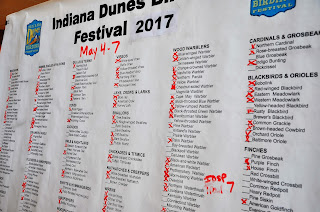This idea really stuck
Birders owe a lot to
the long-running federal duck stamp program
(published 11-14-17)
(published 11-14-17)
When all is well, a birder might say “I have no egrets.”
That passes for humor in our hobby. But right now, I have a big one: I wish I’d
gone to Wisconsin in September to witness the Federal Duck Stamp Art Contest.
Yes, I blew my latest chance to attend the annual two-day event,
which moves around the country and may not land this close to home for a long
time. Next year it’s in Las Vegas. The 2017 contest and judging—the only juried
art competition conducted by the U.S. government—took place at the University
of Wisconsin-Stevens Point. Spectators were welcome, and the Noel Fine Arts
Center was packed.
To fully understand why I longed to be in the audience you’d
need to read “The Wild Duck Chase,” by Martin J. Smith. Or watch “The Million
Dollar Duck.”
The book and feature-length documentary are all about the fascinating
process and real-life drama that determine the design of the Migratory Bird
Hunting and Conservation Stamp, issued every July 1 by the U.S. Fish &
Wildlife Service. Commonly known as the “federal duck stamp,” it sells for $25 with
98 cents of every dollar going toward habitat conservation in the National
Wildlife Refuge System.
Waterfowl hunters ages 16 and older are required to purchase
a stamp. But plenty of others, including birders, buy duck stamps to support
the cause. Stamp holders also get free admission to any NWR that charges an entry
fee.
My dad gave me his mint duck stamp collection a decade ago and
I’ve added to it every year since. The collection begins with the first stamp,
issued in 1934 after President Franklin D. Roosevelt signed the Migratory Bird
Hunting Stamp Act.
You can buy duck stamps at the post office or online at usps.com.
Many outdoor recreation stores carry them, too.
The look of the stamp I’ll buy next summer was determined in
Stevens Point. Out of 215 entries, 12 made it to the final round. The five
contest judges then chose an acrylic painting of mallards by Bob Hautman, awarding
it a perfect score of 25 in the last round of grading.
It was Hautman’s third win in the Federal Duck Stamp Art Contest,
which itself is amazing. But get this: each of his two brothers have won the
contest five times each! The Hautmans, from Minnesota, are living legends in
the world of wildlife art. They are big ducks on a small pond.
The pond would not exist if not for Jay Norwood “Ding”
Darling. A renowned editorial cartoonist, his mallard drawing appeared on the
first stamp. Darling was a passionate conservationist, too, and his work on
behalf of migratory birds helped ensure the duck stamp program’s long-term
success.
Perhaps you have visited J. N. “Ding” Darling NWR on Sanibel
Island in Florida. The site’s Visitor Center includes a nice exhibit devoted to
Darling’s important legacy.
The duck stamp isn’t just about ducks—stamp purchases
benefit all migratory birds. Birders should be thankful for it. Likewise, we
should thank the duck hunters who account for most of the nearly $40 million in
annual stamp sales.
“The birds you see coming through your yard or local park in
spring or fall may have depended on a stamp-supported national wildlife refuge
for nesting or stopover protection,” said Paul Baicich, president of the nonprofit Friends of the
Migratory Bird/Duck Stamp.
Since 1934, stamp sales have raised more than $950 million
and protected about 6 million acres for birds and other wildlife, according to
the U.S. Fish & Wildlife Service.
 |
| This 1984 regular postage stamp commemorated the 50th anniversary of the federal duck stamp. |
Boosting duck stamp awareness outside of the waterfowling
community is a priority. Conservation-minded organizations have even floated
the idea of a separate stamp—a wildlife-watching stamp—that would complement
the duck stamp and perhaps expand the fundraising pool by appealing directly to
non-hunters.
I’d buy a stamp like that, and I think many other birders
would, too. A separate stamp, however, could cannibalize some of current duck
stamp sales. For now, the focus is on broadening the appeal of duck stamps and
building sales among those not required to buy them.
Awareness is growing among birders. The American Birding
Association is a strong duck stamp promoter, and, locally, so is the DuPage
Birding Club. Birders are responding, purchasing stamps and displaying them in
plastic holders that attach to binoculars, field bags and jackets. It’s a good
look!
The stamps, after all, are beautiful. Some contest entrants
spend a full year perfecting their designs. They know that “winning the duck
stamp” could change their lives forever. A contest champion doesn’t receive
prize money but print and merchandise sales featuring their winning design can
be lucrative. The movie is called “Million Dollar Duck” for a reason.
The competing artists have a say in what bird to draw or
paint, choosing from five eligible species each year. Bob Hautman selected
mallard for his 2017 entry, but he could have chosen cinnamon teal, blue-winged
teal, gadwall or harlequin duck.
An exception occurred in 2001, when, for the first time,
there was just one eligible species, black scoter—the only waterfowl that hadn’t
yet appeared on the stamp. The winner that year? A Hautman brother, of course
(Joe).
Some observers believe the contest should adopt the
single-species format every year. Judges would then be comparing mallards to
mallards or eiders to eiders. But the current format of five rotating species seems
locked in, and only “waterfowl” need apply—namely ducks, geese and swans.
This holiday season, consider adding a duck stamp to your
gift list. I guarantee you’ll have no egrets.
Copyright 2017 by Jeff Reiter. All rights reserved.


















